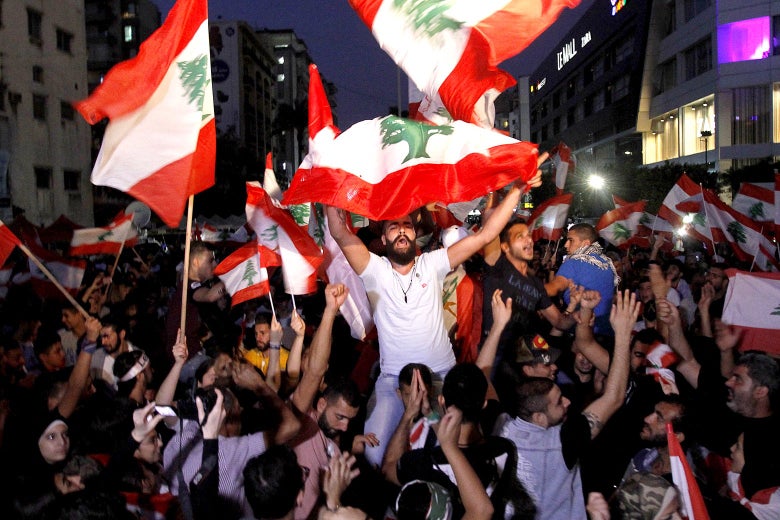What the Protests Breaking Out All Over the World Have in Common
 Austerity-driven protest is spreading. Lebanon has been wracked by days of mass demonstrations by hundreds of thousands of people that were first sparked by a government proposal to raise the value-added tax, and introduce a tax on internet messaging services like WhatsApp, in order to address the country’s massive national debt. Inflation-plagued Zimbabwe saw mass protests sparked by fuel price hikes earlier this year. Austerity measures and cuts to fuel and bread subsidies were a major factor behind the protests in Sudan late last year that led to the overthrow of longtime dictator Omar al-Bashir. The lifting of food and fuel subsidies sent tens of thousands of angry people into the streets of Jordan last year. Austerity measures were also one driver of the unexpected protests in Egypt last month, which probably dwindled only because of the repressive policies of Abdel Fattah el-Sisi’s government.
Austerity-driven protest is spreading. Lebanon has been wracked by days of mass demonstrations by hundreds of thousands of people that were first sparked by a government proposal to raise the value-added tax, and introduce a tax on internet messaging services like WhatsApp, in order to address the country’s massive national debt. Inflation-plagued Zimbabwe saw mass protests sparked by fuel price hikes earlier this year. Austerity measures and cuts to fuel and bread subsidies were a major factor behind the protests in Sudan late last year that led to the overthrow of longtime dictator Omar al-Bashir. The lifting of food and fuel subsidies sent tens of thousands of angry people into the streets of Jordan last year. Austerity measures were also one driver of the unexpected protests in Egypt last month, which probably dwindled only because of the repressive policies of Abdel Fattah el-Sisi’s government.
This new wave of backlash to austerity appears to be on the scale of the 2011 protests that broke out in European countries like Greece, Spain, Ireland, and the United Kingdom in the immediate wake of the Great Recession. But this time, the backlash is primarily happening in developing countries in Latin America, the Middle East, and Africa. The countries involved range from some of the world’s poorest to middle-income and from the most repressive dictatorships to established democracies. The movements are generally loosely organized and sometimes entirely leaderless, with organization taking place on social media and often encompassing a variety of grievances.
No comments:
Post a Comment